While working on a project, I noticed the structural design showing a truss structure on a roof.
What are Roof Trusses:
Roof trusses are engineered timber or metal frameworks that provide support for the roof covering materials and often the ceiling materials below. They are designed to span large distances without the need for internal load-bearing walls, allowing for more open and flexible floor plans.
Advantages of Roof Trusses
- Strength and Stability: Roof trusses are engineered to withstand heavy loads, ensuring the structural integrity of a building even under adverse conditions such as strong winds or heavy snowfall.
- Versatility: With various designs available, roof trusses can accommodate a wide range of architectural styles and building requirements, from residential homes to commercial complexes.
- Cost Efficiency: Prefabricated roof trusses are manufactured off-site to precise specifications, reducing construction time and labor costs compared to traditional stick-built roof framing methods.
- Space Optimization: Certain truss designs, such as scissor trusses and attic roof trusses, allow for increased ceiling height and attic space, enhancing the functionality and aesthetic appeal of a building’s interior.
Disadvantages of Roof Trusses:
- Repair Difficulty: If damaged, trusses can be more difficult to repair compared to conventional framing because of their integrated design.
- Customization Limitations: Because trusses are mass-produced in factories, finding a truss that perfectly matches the unique dimensions of a specific project can be challenging
- Long Lead Times: The manufacturing process for trusses can lead to longer lead times, which may delay construction schedules.
- Aesthetic Considerations: Some may find trusses less aesthetically pleasing than traditional roofs because they tend to be made out of large, bulky pieces of wood.
Types of Roof Trusses:
- King Post Truss: Among the simplest truss designs, the king post truss features a central vertical post (the king post) supporting horizontal beams extending outward to either side, forming a triangular shape. This type is commonly used in smaller structures or for decorative purposes.
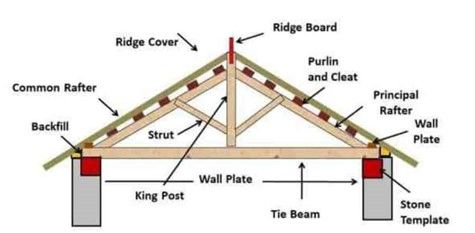
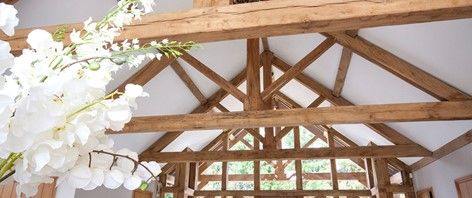
- Queen Post Truss: Similar to the king post truss but with two vertical posts (queen posts) instead of one, this design offers increased stability and is often used in larger roof spans.
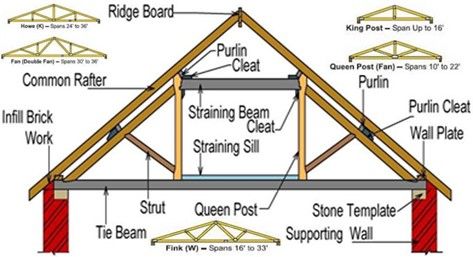
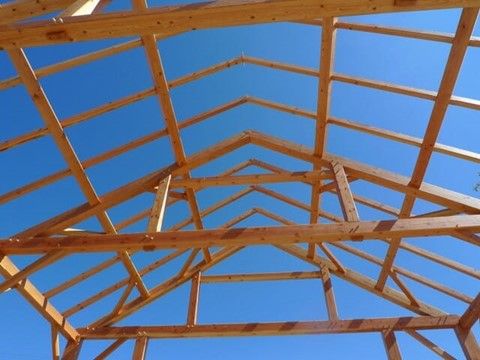
- Scissor Truss: Scissor Trusses are designed with sloping bottom chords that intersect at a central point, creating a scissor-like shape. This design provides additional height and openness to the space below, allowing for open planned living or commercial spaces with a vaulted or cathedral ceiling.
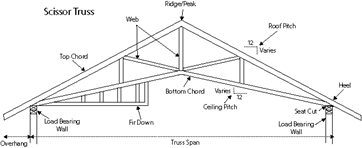
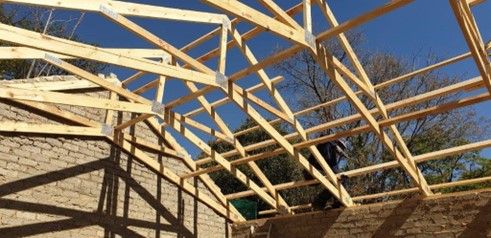
- Attic Roof Truss: Attic Roof Trusses are a modified version of the king post truss design that includes a room-like space within the roof. This type of truss is ideal for creating additional living space or storage within a roof without needing an additional level or more land space.
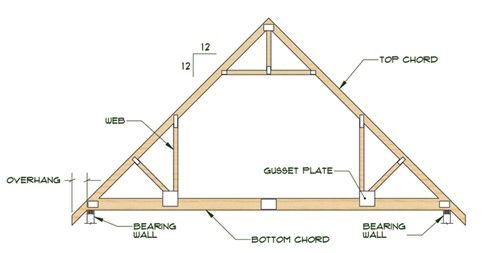
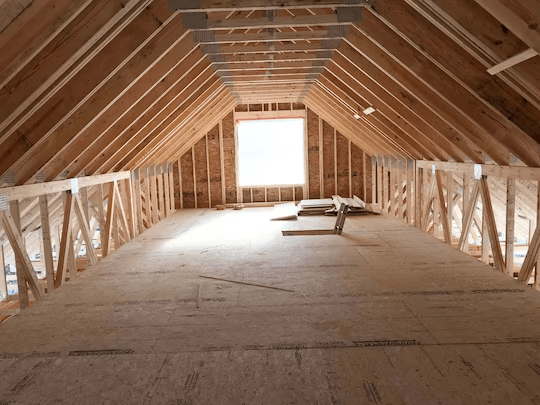
- Fink Roof Trusses: Fink Roof Trusses consist of a network of triangles that distribute the load evenly across the structure, providing maximum strength and stability allowing for long spans that are often utilized in commercial buildings.
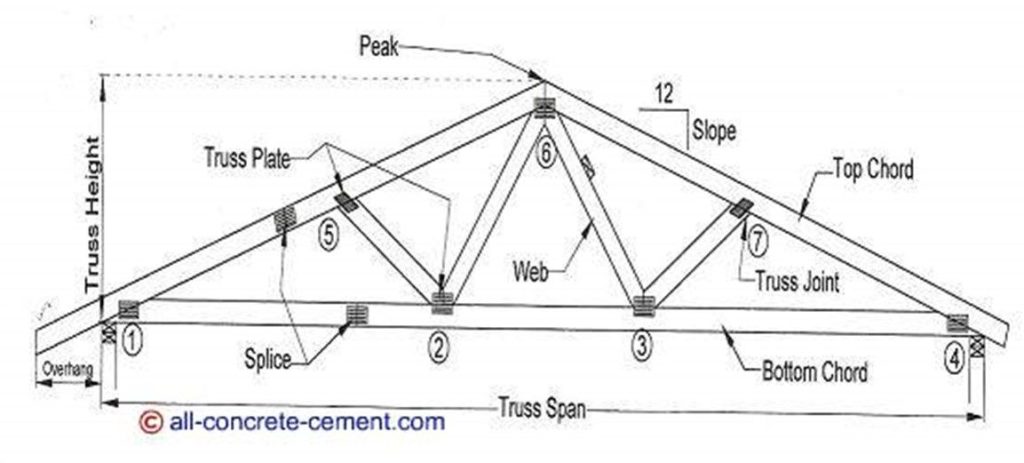
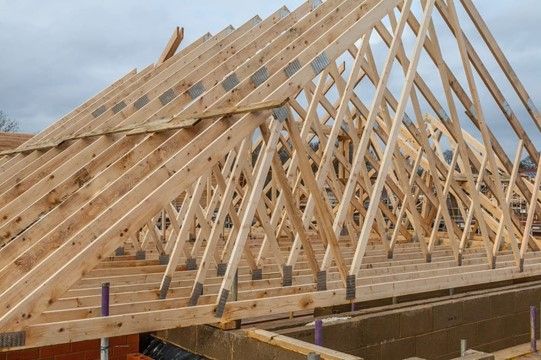
- Flat truss: Flat Trusses are used in flat or low-pitched roofs often where there are building height limitations due to council regulations, overhanging trees or architectural requirements.
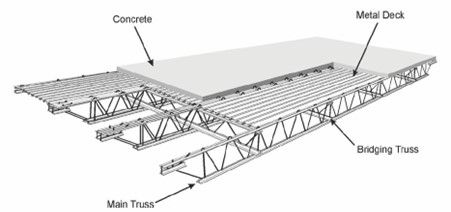
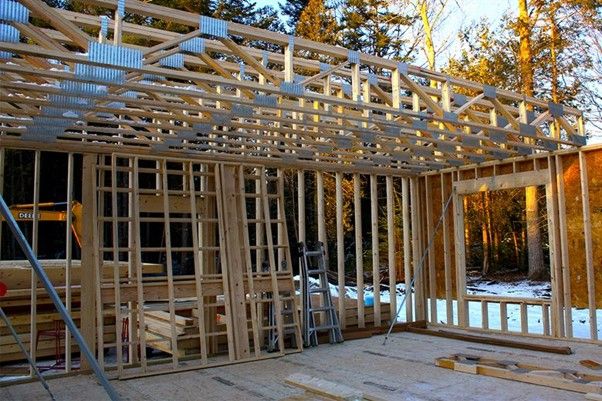
Where are roof trusses used:
Roof trusses are used in a wide variety of construction projects, ranging from residential homes to commercial buildings and industrial structures. Here are some common places where roof trusses are employed:
- Residential Homes
- Commercial Buildings
- Industrial Facilities
- Educational Institutions
- Recreational Facilities
- Agricultural Buildings
- Religious Buildings
Sources:
Types of Roof Trusses and Their Applications in Residential Design | ClearCalcs
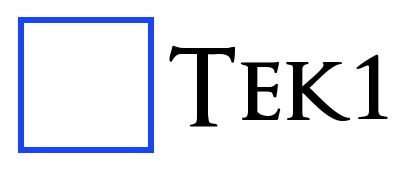
Leave a Reply